ChatGPT:
Sutton Hoo is an archaeological site located near Woodbridge in Suffolk, England. It is most famous for the discovery of an Anglo-Saxon ship burial in 1939, which dates back to the early 7th century. The burial site is believed to be that of an Anglo-Saxon king, possibly King Rædwald of East Anglia.
Key features of Sutton Hoo include:
- Ship Burial: The most notable find is a large burial ship, approximately 27 meters long, which contained a wealth of treasures and artifacts.
- Treasure Hoard: The artifacts found at Sutton Hoo include a magnificent helmet, a shield, a sword, gold and garnet jewelry, silverware, and other high-status items, which provide valuable insights into Anglo-Saxon craftsmanship and society.
- Burial Mounds: The site features several burial mounds, with the ship burial being the most prominent. These mounds indicate the presence of an elite cemetery.
- Historical Significance: The discoveries at Sutton Hoo have greatly enhanced understanding of early medieval England, particularly the connections between Anglo-Saxon England and the wider European world.
Sutton Hoo was discovered in 1939 by an amateur archaeologist named Basil Brown. The landowner, Edith Pretty, had long suspected there might be something of historical significance on her property due to the presence of large mounds. She hired Brown to investigate the site.
Brown began excavating the largest of the mounds and uncovered the remains of a massive ship, along with a wealth of treasures. Recognizing the importance of the find, professional archaeologists, including Charles Phillips from Cambridge University, were called in to assist with the excavation.
The discovery was immediately recognized as one of the most significant archaeological finds in British history, providing an unparalleled glimpse into the wealth and culture of the Anglo-Saxon period. The treasures from Sutton Hoo were later donated to the British Museum, where they remain a centerpiece of the early medieval collection.
Sutton Hoo’s history and development span several phases, marked by significant archaeological discoveries that have provided insights into Anglo-Saxon England. Here’s a detailed overview:
Pre-Anglo-Saxon Period
- Early Use: The area where Sutton Hoo is located had likely been in use long before the Anglo-Saxon period. Prehistoric tools and signs of earlier habitation have been found, indicating that the site may have been significant for millennia.
Anglo-Saxon Period (6th-7th centuries)
- Initial Burials: The site became prominently used during the early Anglo-Saxon period. The construction of burial mounds and the use of the site as an elite cemetery began in the 6th century.
- Royal Ship Burial: Around the early 7th century, the most famous burial took place—the ship burial, believed to be that of a high-status individual, possibly King Rædwald of East Anglia. This burial included a wealth of artifacts that signified power, wealth, and connections with other regions.
Viking and Late Anglo-Saxon Period (8th-11th centuries)
- Continued Use: The site continued to be used for burials and possibly for other ceremonial purposes. Evidence suggests that it remained an important cultural and ritual site throughout the Viking Age and the later Anglo-Saxon period.
Rediscovery and Excavation (20th century)
- Initial Discovery (1939): The most significant development in Sutton Hoo’s modern history was its discovery by Basil Brown, an amateur archaeologist hired by landowner Edith Pretty. The excavation revealed the famous ship burial and its treasures.
- Post-War Excavations (1965-1971): Further excavations led by Rupert Bruce-Mitford uncovered additional graves and artifacts, providing a broader understanding of the site.
- Comprehensive Study (1983-1992): Martin Carver’s team re-examined the site with modern techniques, discovering more about the settlement patterns and environmental context of Sutton Hoo.
Modern Developments (21st century)
- Ongoing Research: Modern technologies like geophysical surveys and non-invasive methods have continued to reveal new aspects of the site without extensive digging. These techniques have identified more potential burial sites and artifacts.
- Museum and Public Access: Sutton Hoo is now managed by the National Trust. A visitor center and museum have been established, displaying many of the finds and providing educational resources about the site and its significance.
- Cultural Impact: Sutton Hoo has become an icon of early medieval history, featured in numerous academic studies, exhibitions, and popular media. It remains a key site for understanding the Anglo-Saxon period in Britain.
Significance
- Cultural and Historical Insight: Sutton Hoo provides unparalleled insights into the culture, craftsmanship, and societal structure of the Anglo-Saxons. The artifacts reflect a society with far-reaching connections, sophisticated artistry, and complex social hierarchies.
- Archaeological Techniques: The site’s history of excavation has also contributed to the development of archaeological methods, from early excavation techniques to modern, non-invasive technologies.
The major finds at Sutton Hoo are renowned for their craftsmanship and historical significance, shedding light on the early medieval period in England. Key artifacts include:
- The Sutton Hoo Helmet: This iconic helmet is richly decorated with intricate designs, including warrior figures and animals. It is one of only a few Anglo-Saxon helmets ever discovered and is often compared to the helmets found in Scandinavia, highlighting cultural connections.
- The Shoulder Clasps: These elaborately designed gold clasps, inlaid with garnet and millefiori glass, would have been used to fasten a cloak or garment. Their intricate workmanship demonstrates the high level of Anglo-Saxon metalworking skills.
- The Shield and Sword: The shield features a central boss with elaborate design, while the sword is noted for its pattern-welded blade and ornate gold hilt. These items reflect the martial culture and status of the person buried at Sutton Hoo.
- The Purse Lid: The purse lid is adorned with garnets and cloisonné work, depicting human and animal figures. It would have covered a leather pouch containing gold coins, known as Merovingian tremisses, indicating trade and wealth.
- The Great Gold Buckle: This large, heavy gold buckle is intricately decorated with interlacing patterns and is a masterpiece of Anglo-Saxon metalwork. It suggests the wearer’s high social status and the wealth of the period.
- Silverware: The hoard includes silver bowls, spoons, and a dish from the Byzantine Empire, indicating extensive trade networks and the influence of distant cultures.
- The Frankish Hanging Bowl: This ornately decorated bowl reflects connections with the Frankish kingdoms and possibly held a ceremonial or symbolic role.
Historical Significance:
- Cultural Insight: The artifacts provide a vivid picture of the wealth, craftsmanship, and cultural connections of the Anglo-Saxon elite. They reveal influences from Scandinavian, Byzantine, and Frankish art and culture, suggesting a cosmopolitan elite society engaged in long-distance trade and cultural exchange.
- Royal Burial: The site is believed to be the burial place of a king, possibly Rædwald of East Anglia. The richness of the grave goods supports the idea of a powerful and wealthy ruler, offering insights into the social and political structures of the time.
- Anglo-Saxon Artistry: The items demonstrate the high level of artistry and technical skill in metalworking, enameling, and other crafts among the Anglo-Saxons.
- Historical Context: The finds help to fill gaps in the historical record of early medieval England, a period with limited written sources. They contribute to the understanding of the transition from paganism to Christianity and the development of the early English kingdoms.
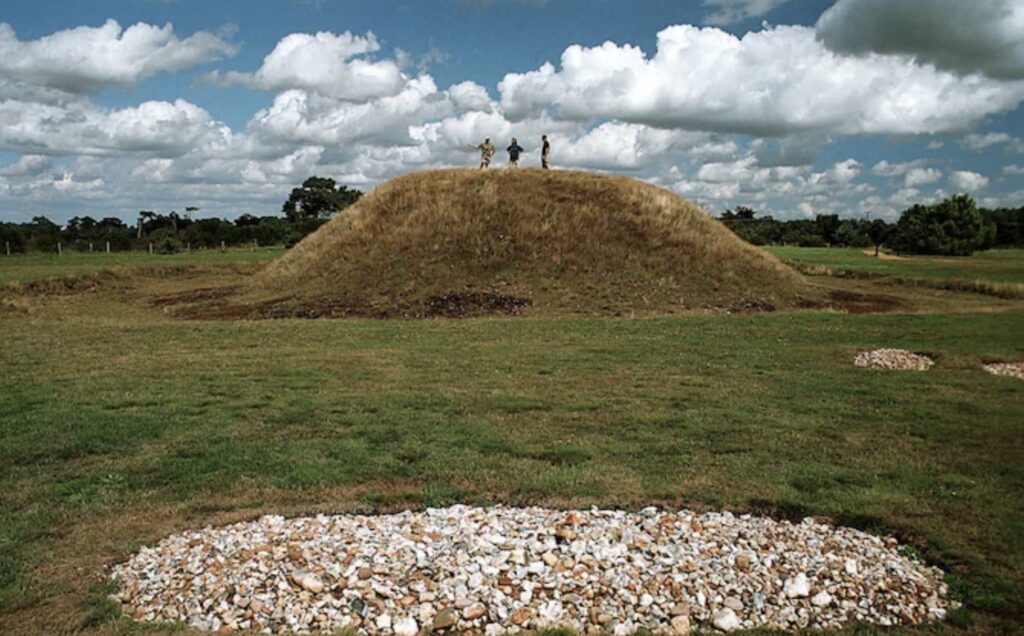
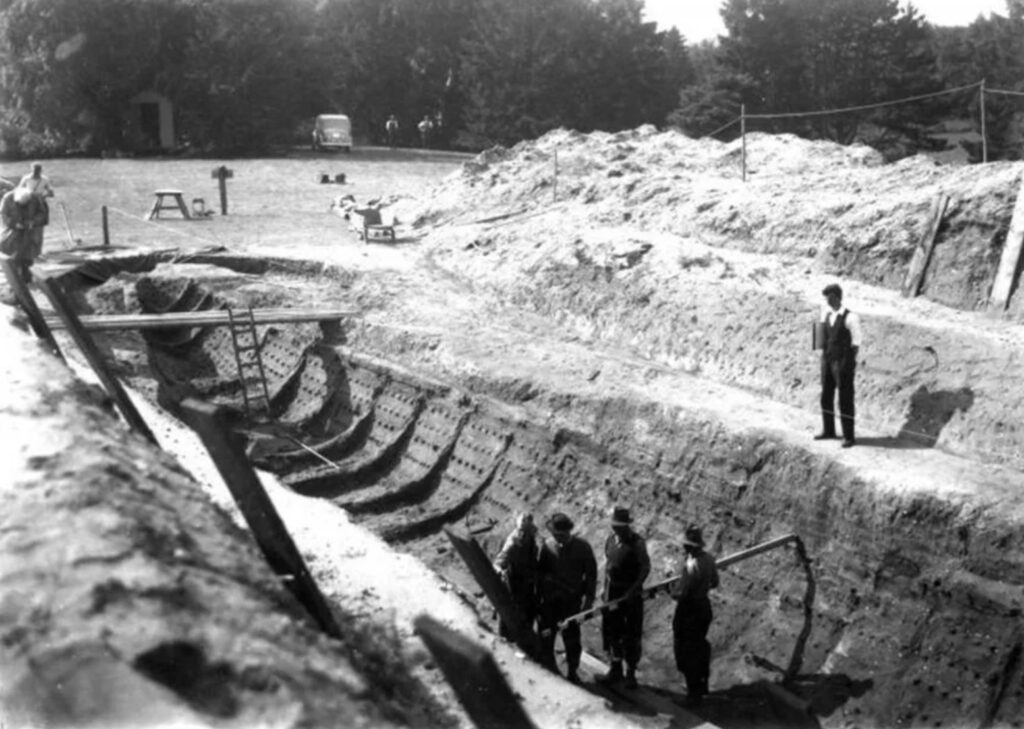
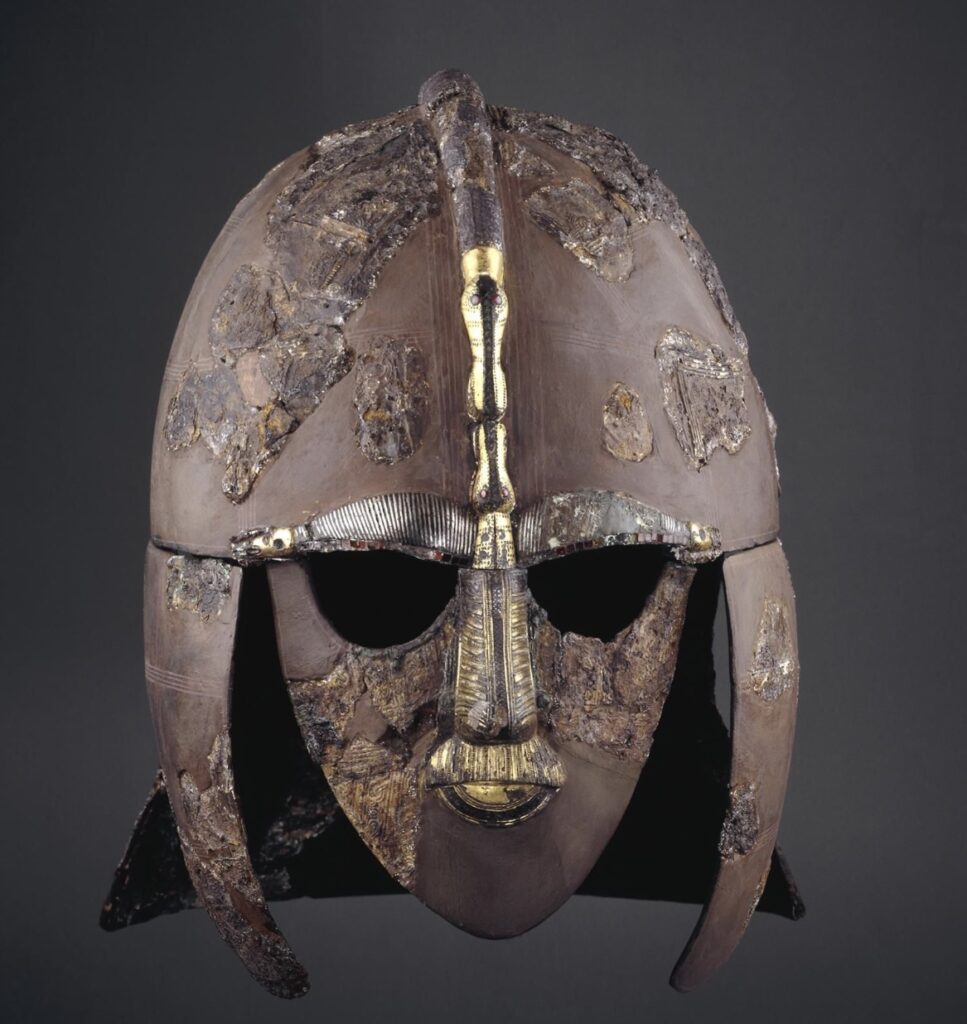
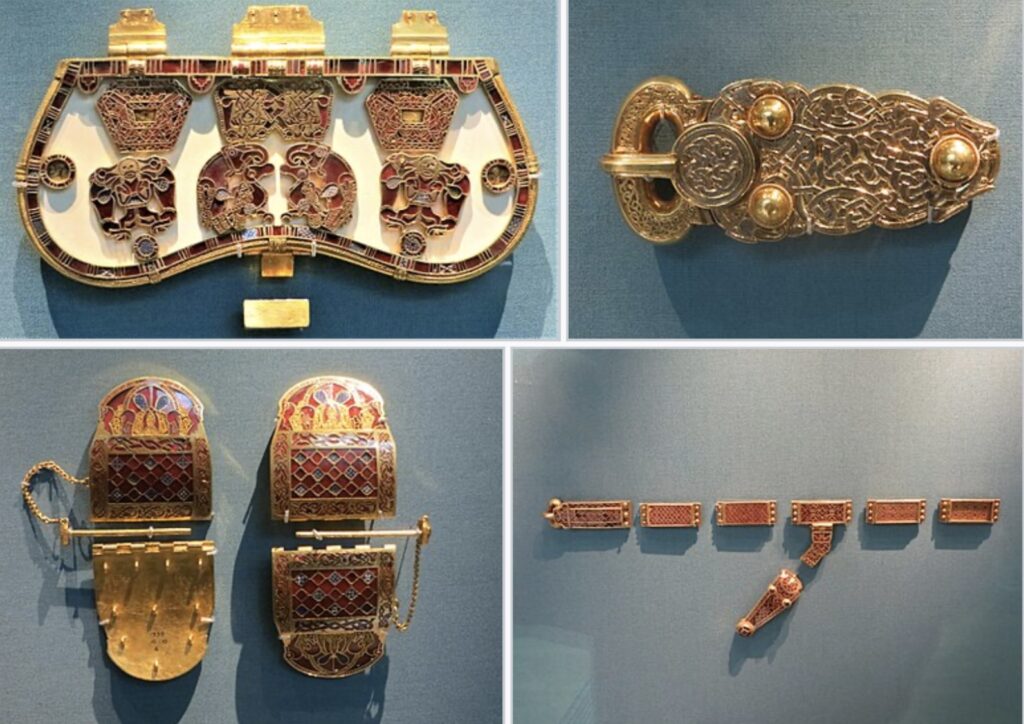
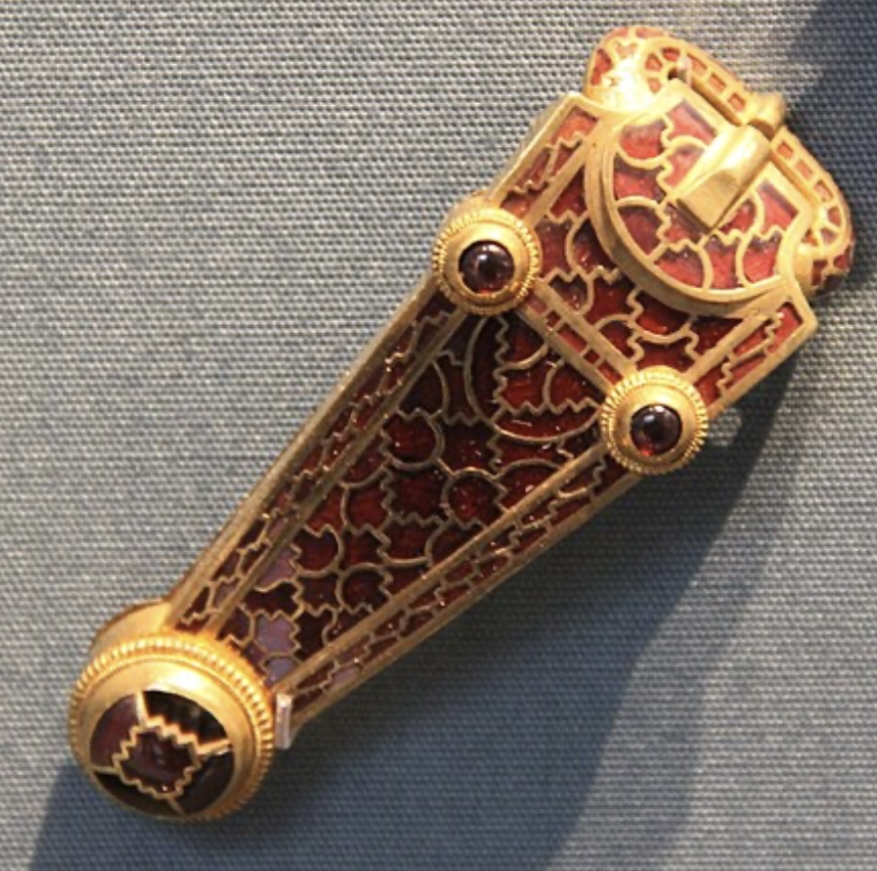
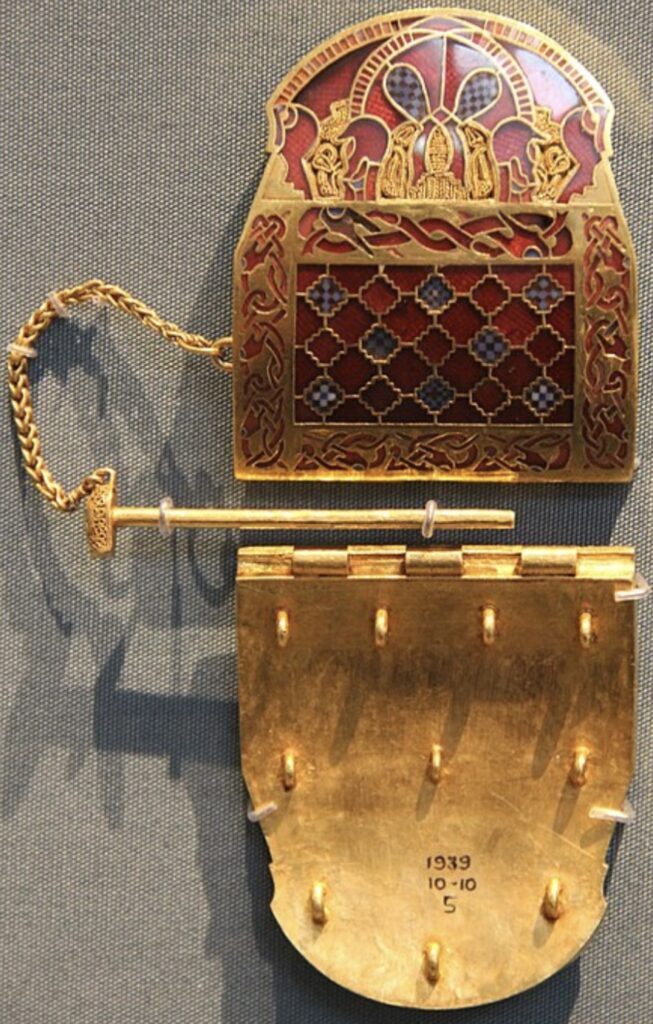
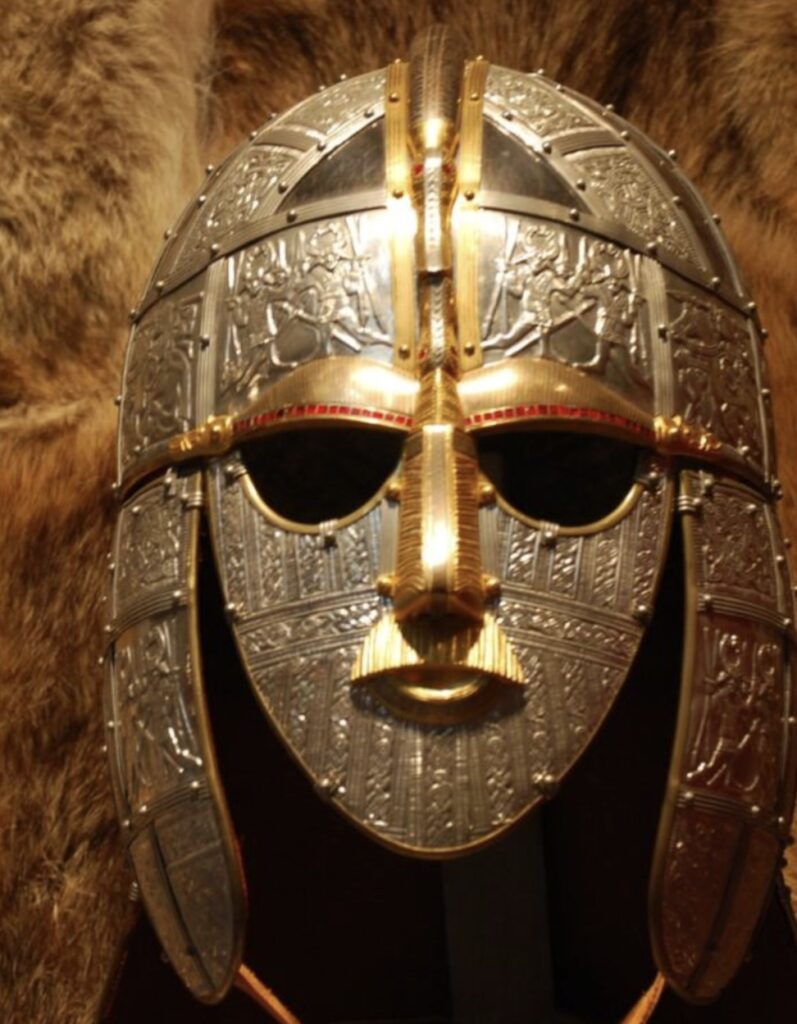
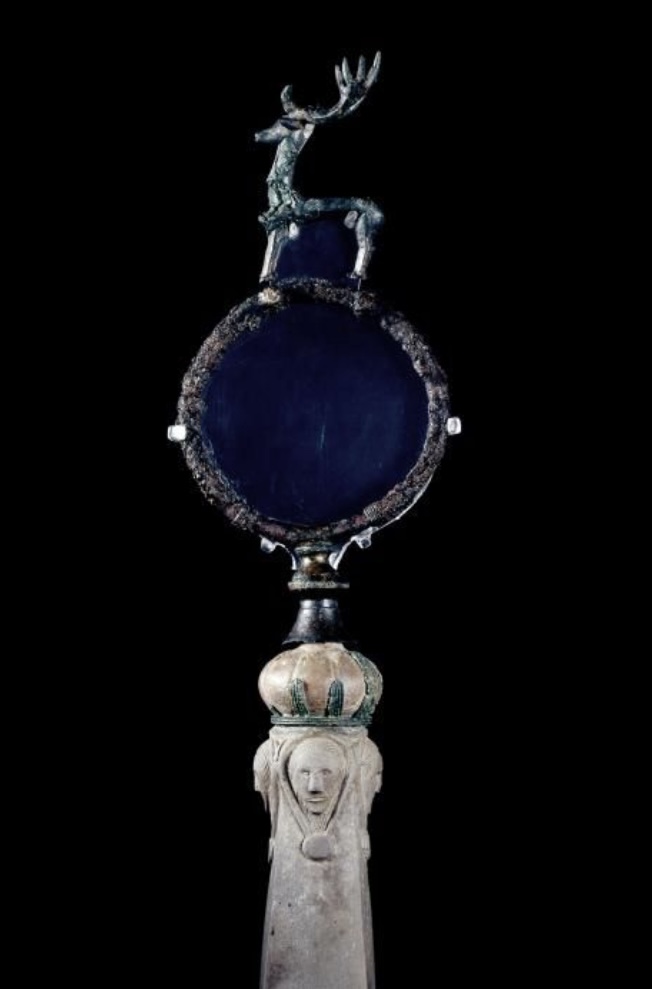
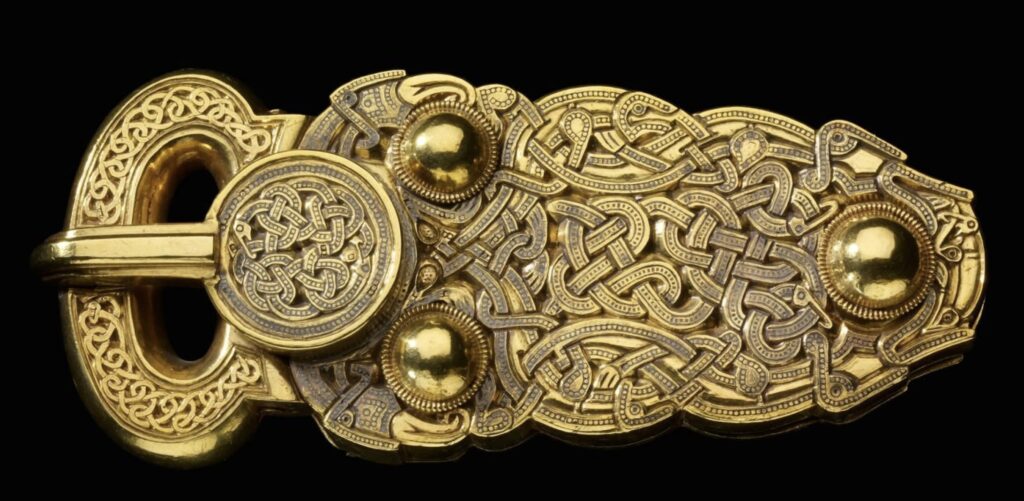
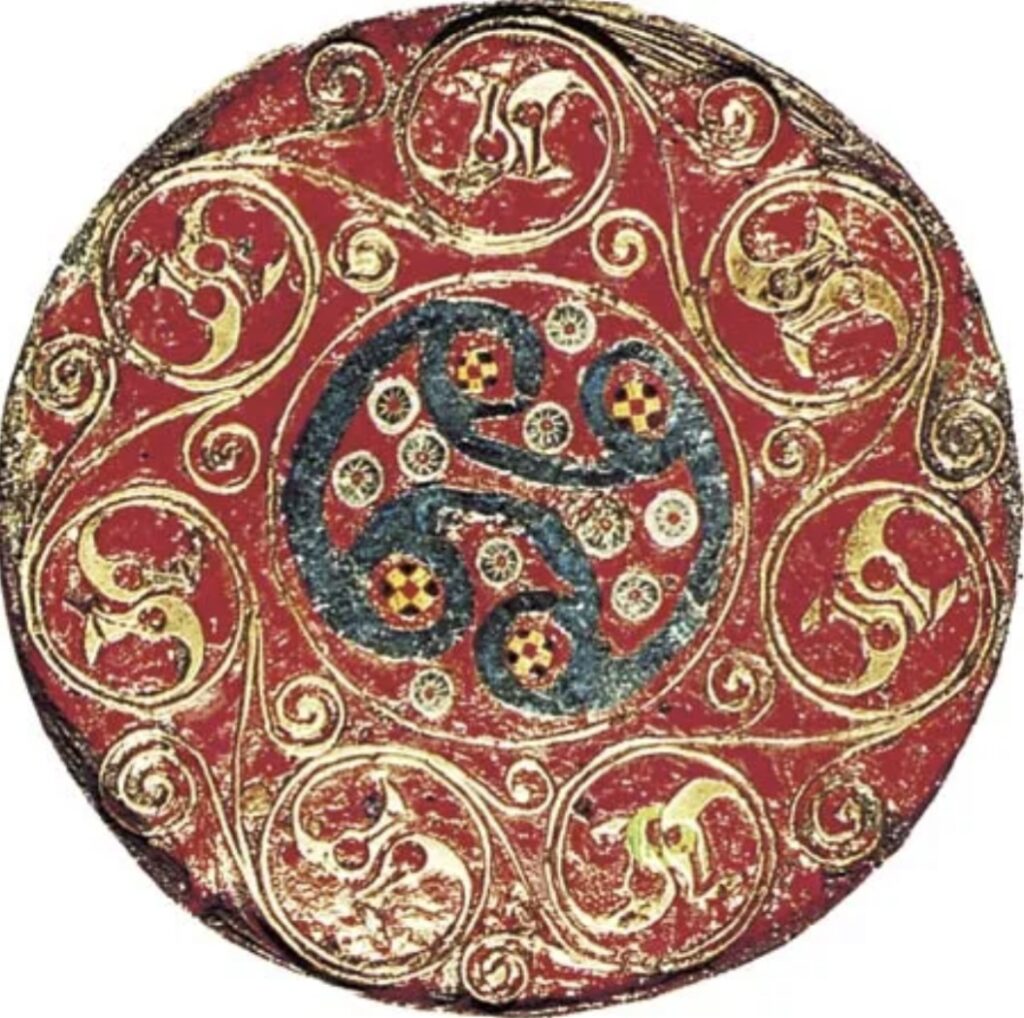
The history of the Anglo-Saxons spans several centuries and is a foundational period for the development of England. Here is a brief overview:
Early Migration (5th-6th centuries):
- Arrival: Following the Roman withdrawal from Britain around 410 AD, various Germanic tribes, including the Angles, Saxons, and Jutes, began migrating to Britain.
- Settlement: These tribes settled primarily in the eastern and southern parts of the island, establishing small kingdoms.
Formation of Kingdoms (6th-7th centuries):
- Heptarchy: By the 7th century, several dominant kingdoms had formed, including Northumbria, Mercia, Wessex, East Anglia, Kent, Essex, and Sussex, collectively known as the Heptarchy.
- Christianization: Christianity began to spread, with figures like Augustine of Canterbury and the missionary work from Ireland and Rome playing key roles.
Viking Invasions (8th-9th centuries):
- Raids and Settlements: Beginning in the late 8th century, Viking raids became frequent, leading to Norse settlements in parts of England.
- Danelaw: The Vikings established the Danelaw, a region of England under Norse control, which coexisted with Anglo-Saxon territories.
Unification (9th-10th centuries):
- Alfred the Great: The King of Wessex, Alfred the Great, successfully defended against Viking invasions and began efforts to unify the Anglo-Saxon kingdoms.
- Edward the Elder and Athelstan: Alfred’s successors continued these efforts, with Athelstan being recognized as the first king of a unified England in 927.
Decline and Norman Conquest (11th century):
- Renewed Viking Attacks: The early 11th century saw renewed Viking attacks, leading to periods of Danish rule under kings like Cnut the Great.
- Edward the Confessor: The last significant Anglo-Saxon king, his death in 1066 led to a succession crisis.
- Battle of Hastings: In 1066, William the Conqueror defeated King Harold II at the Battle of Hastings, leading to the Norman Conquest and the end of Anglo-Saxon rule.
Legacy:
- Cultural Impact: The Anglo-Saxon period left a lasting legacy on English language, law, and culture.
- Literature: Works like “Beowulf” and the “Anglo-Saxon Chronicle” are significant literary contributions from this era.
The Anglo-Saxon period was crucial in shaping the early history of England, leading to the development of a unified English kingdom.
